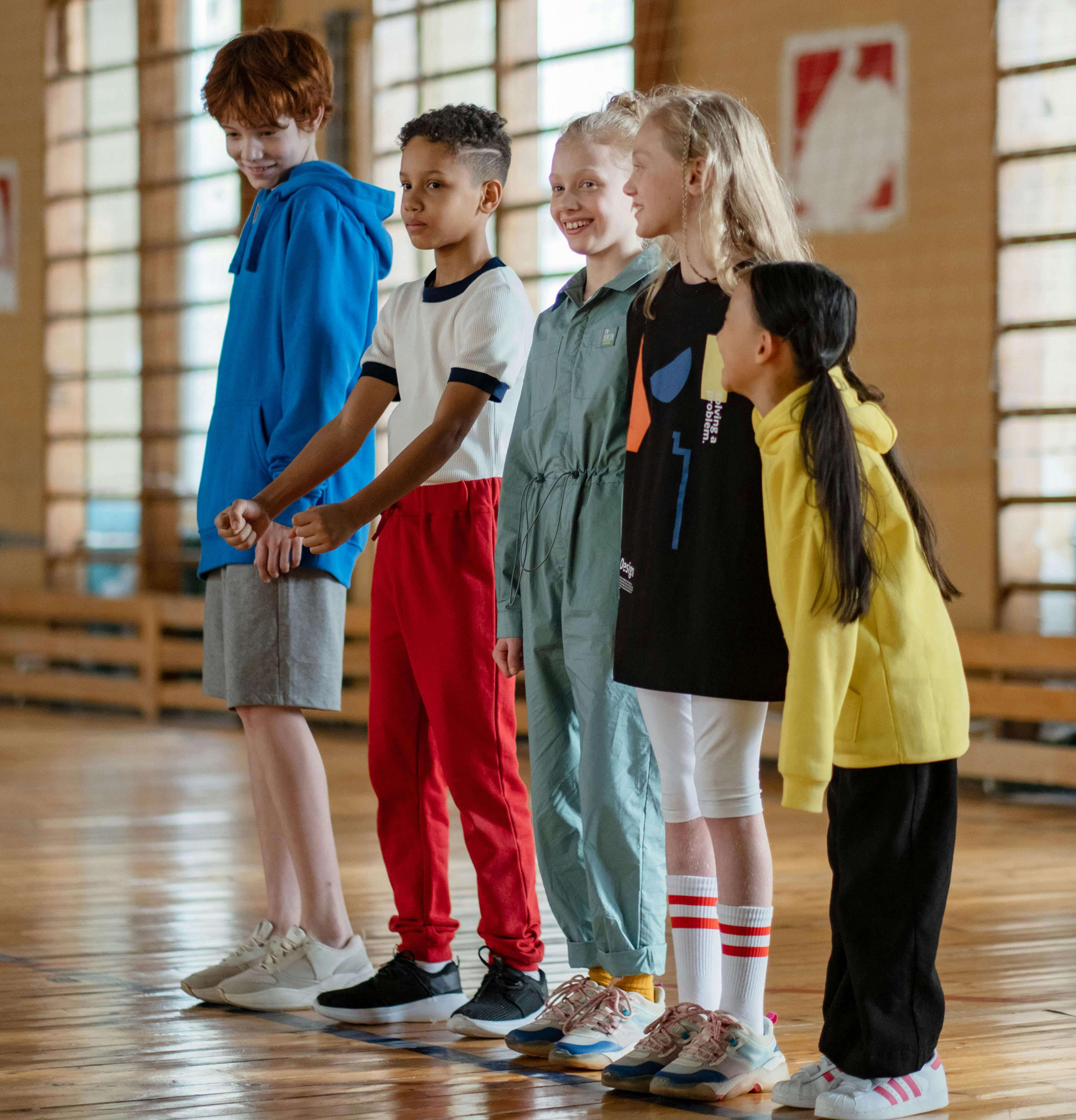
The program is now aligned with the Australian Curriculum V9.
Developed over 10 years, this whole school sequential PE program includes all component areas: Fundamental Motor Skills, Athletics, Gymnastics, Ball Handling, Fitness, Basic Movement, Sport, Dance, Games, Outdoor Education and Sport Education.
Lessons are enjoyable, all-inclusive and a sequential progression of motor skills to ensure goals are attainable by all students.

Essential learning for Foundation to Year 6
When topics are covered in each term
Comments for every progression point
Visual aids to help with understanding game purpose, game strategies and example of sports in picture form
Longer units of work are included to enhance deeper levels of thinking and learning. All sport units include small sided games to increase activity and engagement with a focus on personal best performances.

The Complete PE Program provides everything you need from Foundation through to Year 6.
All planning is done for you!

These are tools to visually represent thoughts, ideas, knowledge and concepts. They help to organise thoughts and to promote understanding.
Students and teachers can use these rubrics to explain levels or quality of performances and achievement. These explicit statements can be used to inform and inspire learning at the beginning, during and conclusion of units of work.
Students are now able to set personal goals for skill development and improvement. They then develop their own practice timeline and are assessed against their own goals. Personal bests are now rewarded!
Teachers and students can use assessment criteria as a type of checklist that considers the degree to which a criteria is met. A rating scale is used to described criteria that will be used to judge whether the desired level of performance has been achieved.
Game Performance Assessment Instrument (GPAI) for Invasion, Striking/Fielding and Net/Wall games is a multidimensional system designed to measure game performance behaviours that demonstrate tactical understanding, as well as the player's ability to solve tactical problems by selecting and applying appropriate skills. GPAI provides analyses of individual game performance components of decision making, skill execution and support.
These checklists are easy to use by the teacher and by the student. They focus attention on one criteria at a time giving an indication if skills have been accomplished or not.
Teaching Personal and Social Responsibility (TPSR) aims to help students take more responsibility for their own participation and learning. The teaching of these levels give student's the strategies that develop positive participation behaviours.
TPSR Participation levels are:
The Complete PE Program has allowed me to re energise the current PE...
My first year has been an absolute breeze using your program!
As a small school with classroom teachers taking P.E lessons, we found...